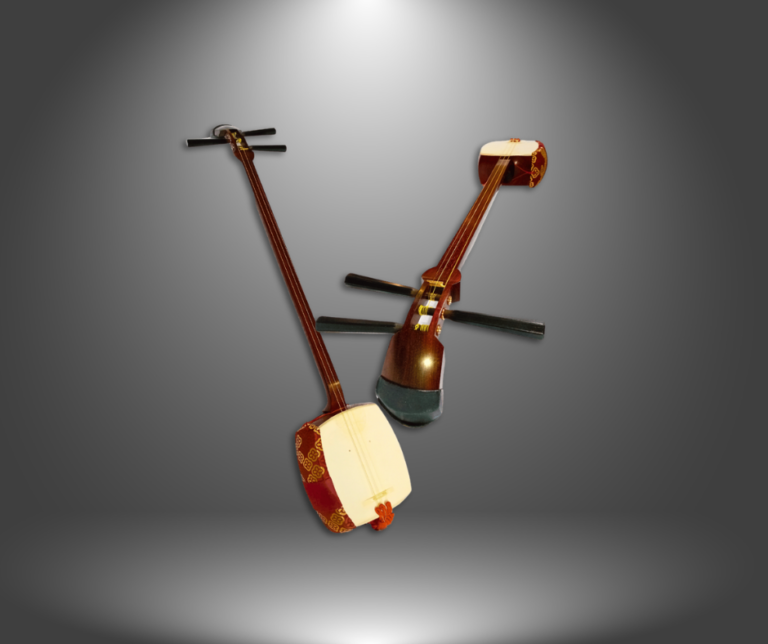A shamisen is an aesthetic and iconic Japanese musical instrument.
The body of the shamisen, known as the “dō,” is typically rectangular and covered with skin, often from a dog or cat, though synthetic alternatives are also used.
The long, slender neck, called the “sao,” is fretless and usually wood-made.
The shamisen usually has three strings traditionally made of silk, although nylon strings are also common today.
The instrument is played with a plectrum called a “bachi,” which is used to pluck the strings.
The shamisen produces a distinctive, resonant sound. The tuning and playing style can vary, often depending on the music genre. Common tunings include “honchōshi” (standard tuning), “niagari” (raised second string), and “sansagari” (lowered third string).
The shamisen is used in various forms of Japanese music, including traditional folk music, kabuki theater, and geisha performances. It is often associated with the Edo period and is significant in Japanese cultural heritage.
There are different types of shamisen, each suited to specific genres or styles of music. For example, the “jiuta” shamisen is used in traditional chamber music, while the “nagauta” shamisen is commonly used in kabuki theater.
Additional Details
Artist/Creator/Factory: unknown
Dimensions: Lenght 100 cm
Material: wood, silk strings, cat or dog skin
Year: unknown but appearing vintage
Origin: Japan
